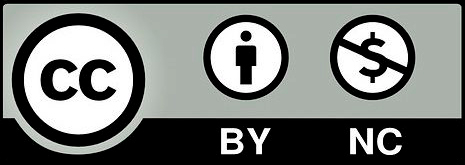 Savings products: deposits Savings products: deposits
What is a bank deposit? Click to read Click to read
|
The way a deposit works is very simple. When someone, whether a person or a company, has an amount of money that they do not need at the moment and gives it to a bank for an agreed period of time and under agreed conditions to obtain interests in exchange. It could be said that a bank deposit is like a small loan that the customer makes to the bank and for which he/she receives a profit.
In the European Union, the first €100,000 you have invested in a deposit or current account is protected by the Deposit Guarantee Fund (DGF), so if the bank crashes that €100,000 has to be returned.
|
 |
Types of bank deposits. Click to read Click to read
|
In banks you can find different types of deposits where you can put your money. The deposits available are as follows:
Demand deposits: The most outstanding feature of this type of deposit is that they guarantee full liquidity of the deposited funds. In other words, the holder can withdraw the money at any time on request, either at a branch, at an ATM, through remote banking or by making a transfer. On the other hand, their profitability is usually very low or non-existent (sometimes even negative, given the cost of fees/commissions).
|
 |
|
There are two types of demand deposits:
- Checking accounts: When contracting this account, the bank undertakes to provide a cash service, which consists of receiving income (paychecks, pensions, etc.) and making payments (bills, loan instalments, etc.) ordered by the account holder.
- Savings accounts: These are practically identical to checking accounts. The only difference between the two is their "physical medium". In savings accounts, the medium is the passbook.
The purpose of these accounts is to be used as an operating account, ideal for the payment and receipt of bills for personal household finances.
|
 |
|
Term deposits: This is a banking product in which we give our money to the bank for a certain period of time and at the end of this period we receive the amount given plus the agreed interest.
This type of deposit generally offers a higher return than a demand account, in exchange for sacrificing the availability of your money during the contracted term. If you withdraw the money before the contracted time, most banks charge a penalty or commission (stated in the contract).
|
 |
|
Term deposits can take two forms:
- Fixed-Term Deposits (FTD): are characterised by the fact that the financial institution undertakes to pay the customer a certain interest rate on the agreed date or at the agreed frequency, while the customer is obliged, in principle, not to withdraw the funds until the agreed maturity date (the terms and the yield or interest rate are fixed in advance). It is common for contracts to include the tacit renewal of the deposit.
- Structured deposits: are deposits with a specified term, where the return is linked to the performance of one or more stock market indicators, to the price of a group of shares, or to the price of any other asset. In this type of deposit, a minimum return or, in the worst case, the amount of the invested capital is usually guaranteed.
|
What fees are charged for the provision of services? Click to read Click to read
|
Fees (or commissions) are the amounts payable to banks for the services they provide. The most common ones, in relation to accounts and deposits, are as follows:
|
- Maintenance fee: banks charge a maintenance fee for maintaining the account. It usually includes basic operations such as, for example, cash deposits and withdrawals, the right to order debits and credits to the account as well as the delivery of cheque books or passbooks and the safekeeping of money.
- Administration fee: this is a fee charged for carrying out a series of transactions or entries.
- Overdraft fee: a fee charged by the bank for allowing your bank account to be debited if you do not have a sufficient balance.
- Fee for transfer orders: The bank may charge a commission for this service, which is usually a percentage of the amount of the transfer, with a minimum per operation.
- Fee for withdrawing cash from an ATM: you will be charged a fee if you withdraw cash from any ATM that does not belong to the bank or to the bank's network.
|
 |
What to consider before taking out a fixed-term deposit. Click to read Click to read
|
When deciding on a fixed-term deposit, the following aspects should be taken into account:
Term: This is the period during which the customer undertakes to leave his money deposited with the institution. The longer the term, the higher the return, although the risk of a rise in interest rates is also assumed, from which the customer could not benefit by having his funds locked in at a fixed rate. On the other hand, however, in the event of a fall in interest rates, the customer is assured of receiving the agreed interest rate for the term of the deposit.
|
 |
|
Profitability: The higher the profitability, the greater the economic benefit. Normally the interest rate is fixed, i.e. it remains unchanged throughout the contracted period, but it is also possible that the interest rate applied may vary depending on the evolution of an index taken as a reference, such as, for example, the Euribor or a stock market index. The interest earned on this investment will be credited to the account for the net amount, i.e. after deduction of tax withholdings.
|
 |
|
Frequency of interest payments: The frequency with which a fixed-term deposit earns interest. The most common types are monthly, quarterly, half-yearly, annual or at maturity. The choice of one type or another depends on the customer's preferences or needs: for example, to supplement a regular income (salary or pension).
For a given interest rate, the higher the frequency of interest payments, the higher the effective return, which is reflected by the APR (Annual Percentage Rate). In order to allow savers to compare different deposit offers in a homogeneous way, financial institutions are obliged to publish the APR of the deposits offered.
|
 |
|
Liquidity: For deposits, it is determined by how easy it is to recover the investment made, without any loss of capital or interest.
Traditional fixed-term deposits guarantee 100% of the investment made, so look out for the penalty or early withdrawal fee.
In any case, the penalty or fee charged for early cancellation may not exceed the amount of interest earned on the deposit up to the date of cancellation.
|
 |
 Summing up Summing up
Summing up Click to read Click to read
 |
Bank deposit
A bank deposit is like a small loan that the customer makes to the bank and for which he/she receives a profit.
|
 |
 |
Types of bank deposits
Demand deposits (checking accounts, savings accounts) and term deposits (FTDs, structured deposits).
|
 |
Fees
Maintenance, administration, overdraft, for transfer order, for ATM use.
|
 |
Fixed-term deposits
When taking out a FTD, we have to consider term, profitability, liquidity and frequency of interest payments.
|
|

 Savings products: deposits
Savings products: deposits Click to read
Click to read 








